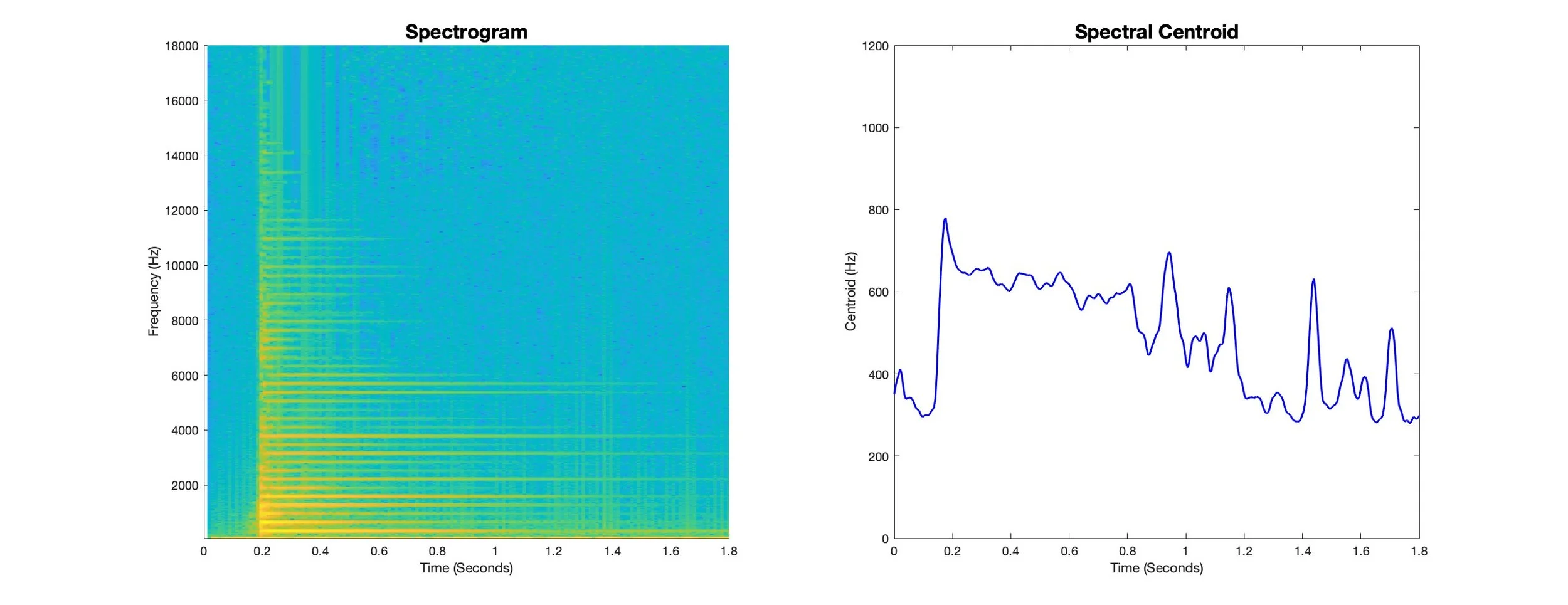Spectral centroid
EN | FR
Spectral centroid
by Julie Delisle
Timbre Lingo | Timbre and Orchestration Writings
Spectral centroid is an acoustical descriptor of timbre. Its value is obtained through a statistical measurement (weighted average) on the frequency representation of the signal (see "Signal vs Spectrum"). As its name says, centroid is a spectral descriptor and corresponds to a specific type of estimation of the spectral shape (or curve).
Its measurement consists of estimating the center of mass of the spectrum. Its value corresponds to a frequency (in Hz), on both sides of which the energy is equally distributed. Usually, the centroid frequency is successively calculated on several temporal windows (which duration, usually of about 50-60 milliseconds in average, is predetermined), and then the mean value is calculated; this corresponds to the centroid frequency for the whole duration of the sound that has been evaluated.
In other words, the centroid value "represents the relative weight of high and low frequencies" [1]. Several experiments in psychoacoustics have shown that the centroid was strongly correlated to the perceived brightness of a sound, and that it is one of the most important features of sound when it comes to discriminating several instrumental timbres (for instance, the timbres of the oboe and of the horn).
Furthermore, we often observe a variation of the centroid when an instrumentalist increases the dynamics while playing. If a trumpeter plays a note first piano, and then forte, the intensity (in decibels) will increase, but we will also observe that the centroid will move towards higher frequencies, which corresponds to a brighter sound. In the case of instruments whose dynamic register is more limited, like the flute, one can use brightness variations (or centroid variations) to simulate greater dynamic changes.
Spectral centroid curve of a banjo (right) next to its spectrogram (left). Notice how the centroid value decreases as the sound progresses, which is consistent with the distribution of harmonics (high-frequency partials fade faster) and with the amplitude envelope shape (which demonstrates how sound intensity and spectral centroid are correlated).
REFERENCE
[1] McAdams, Stephen, et Bruno Giordano. 2010. « La psychoacoustique dévoile le potentiel musical du timbre ». Dans Actes du 10ème Congrès Français d’Acoustique. Lyon, France. Repéré le 7 janvier 2018 à l’URL, http://www.brunolgiordano.net/SMC_BLG_ 2010_CFA10.pdf.

